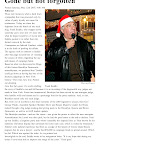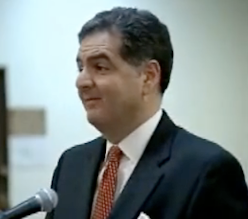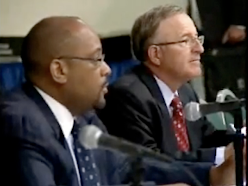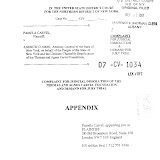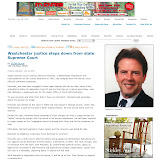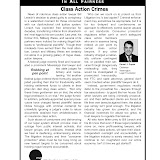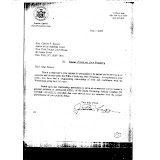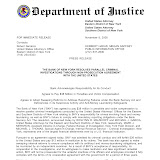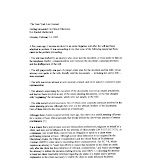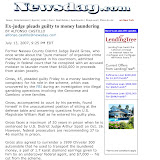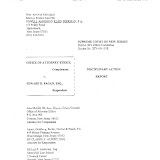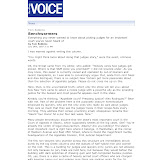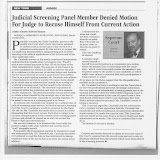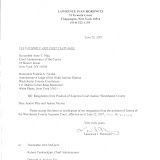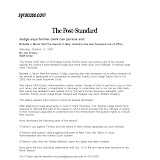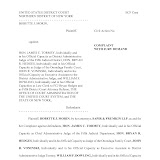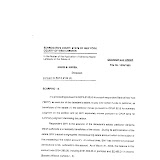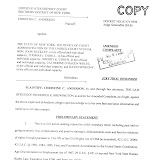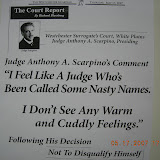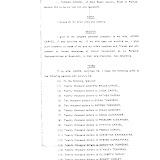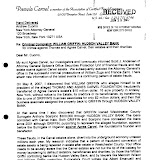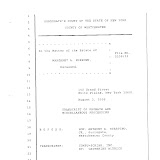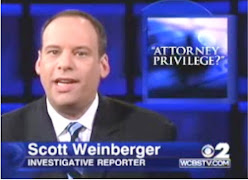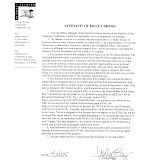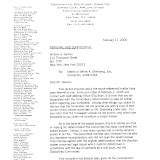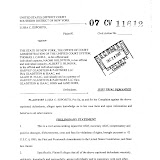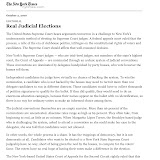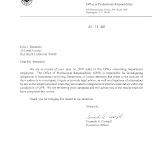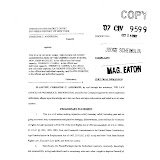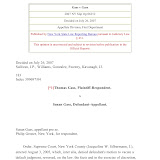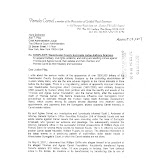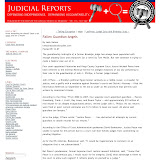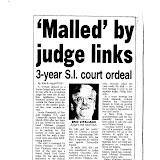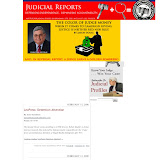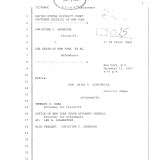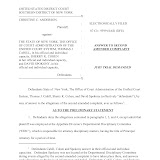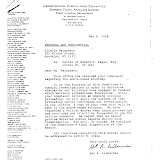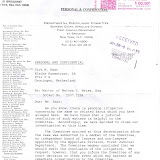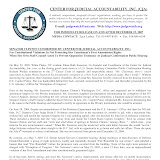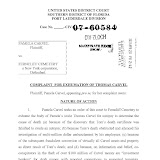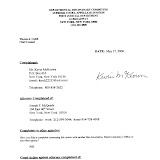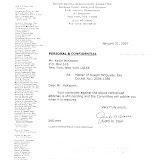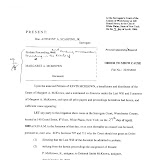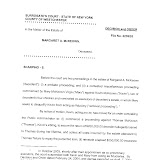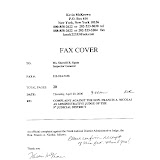A Legal Bulldog’s Journey, From Prosecutor to Prosecuted
The New York Times by KAREEM FAHIM - December 12, 2009
In the early 1970s, from a perch on the 57th floor of the World Trade Center, a handpicked team of young prosecutors chased after crooked public officials in a city teeming with them. Fresh out of law school, Robert M. Simels jumped at the chance to investigate that corruption. A bulldog in an office of strivers, he threw himself at big assignments, undaunted — even excited — by the prominence of the men he pursued: a judge, an organized crime chief and a well-known city priest. “He was straight as an arrow,” said Paul W. Pickelle, a prosecutor who worked in the office. But years later, as a defense lawyer, Mr. Simels claimed a special if little-noticed place in the annals of ironic falls, among the police officers convicted of killing and moralizing politicians caught philandering. The lawyer who once seemed incorruptible was convicted of a crime that strikes at the very heart of the justice system: arranging to bribe or harm witnesses preparing to testify against one of his clients.
Last week, a federal judge, John Gleeson, sentenced Mr. Simels, 62, to 14 years in prison. It fell to a young, hungry prosecutor, just as Mr. Simels was 35 years ago, to say what many of his friends privately acknowledged: “This defendant, of course, should have known better,” said Morris J. Fodeman, chief of the public corruption unit in the United States attorney’s office in Brooklyn. With his sharp suits and roster of famous clients, Mr. Simels joined the ranks of the city’s elite defense lawyers long ago, even as his abrasive nature set him apart. A son of the Bronx who came late to fatherhood, he had no time for bar associations and lawyers’ clubs, but plenty for his children, whom he doted on. He prepared for trials as if an empire were at stake, and even wrote one chapter, called “Cross Until They Drop,” for a book on various issues involving cross-examination. He rarely left legwork to investigators, saying he craved “eye contact” with sources. “He had arrogance, and he pushed the envelope,” said Ronald Rubinstein, a lawyer who worked with Mr. Simels on several cases. “He was a warrior, and that’s why I like him. He served a lot of clients well.” In a telephone interview in the wake of his sentencing, Mr. Simels spoke quietly about his accomplishments and declined to name any regrets. Citing a pending appeal, he also refused to discuss the case that led to his ruin. He had always been very good at something. In high school, in Mount Vernon, N.Y., it had been sports. Mr. Simels, an A student, played outfield on a team that included future major-leaguers, including Ken Singleton. He was the president of his college fraternity and flirted with a career in medicine. After a stint in Missouri training in the Army Reserves, Mr. Simels returned to New York to start law school. The career made perfect sense. He was barely a teenager when he read his first law book, given to him by his mother’s cousin, a civil lawyer. “He had such exuberance about the law and jurisprudence,” Mr. Simels said.
In 1974, he went to work for one of the city’s legal stars, Maurice H. Nadjari, the state’s special prosecutor, newly appointed to investigate the rampant corruption in the criminal justice system at the time. Mr. Nadjari was a controversial figure, seen as a loner and a zealous prosecutor, with little talent for self-preservation. “He was the best boss anyone could ask for,” Mr. Simels said. “I think he was misperceived by many.” The two shared many traits. Richard A. Nachman, who headed the Manhattan bureau where Mr. Simels worked, said of his employee: “He was quite an aggressive young fellow — sometimes, I felt, overaggressive. If he saw a case that involved someone of some importance, he would leap at that and go to work. I don’t say that in a derogatory way.” Mr. Pickelle, his fellow prosecutor, said he never saw a hint of unethical behavior from Mr. Simels. “Nadjari would have killed him,” he said. Mr. Simels left the prosecutor’s office in 1979 to start his own defense practice — “It was just time to go,” he said — and within a year, he took on the case of Henry Hill, the mobster turned government informant. Mr. Simels was picked, in part, because he had no clients tied to organized crime, and representing Mr. Hill, whose life was the basis of the film “Goodfellas,” meant he never would. Instead, he became well known for representing clients charged in drug cases, and for recurring questions about his ethics.
In 1993, the United States Court of Appeals for the Second Circuit took up the question of whether Mr. Simels, by visiting a witness in jail who might have testified against his client — without notifying the witness’s lawyer — deserved censure. He did not, the judges concluded, finding that Mr. Simels was “engaging in critical pretrial investigation.” But in another case, a former client named Thomas Mickens, a convicted cocaine dealer, said that Mr. Simels had kept a government plea offer from him in order to keep getting paid. A judge found that Mr. Simels had not passed along the offer. Some of his peers said they wondered whether the steady diet of clients who were drug dealers had taken a toll on Mr. Simels. And in a letter of support to Judge Gleeson, Joel Cohen, who was a fellow prosecutor with Mr. Simels in the 1970s, noted Mr. Simels’s isolation — he had never taken a law partner. Mr. Cohen should have been a better friend, he wrote, if only to provide a second opinion “when his faithfulness to the call of duty cried out particularly loudly from society’s reprobates.” He was referring to clients like Shaheed Khan, a Guyanese drug trafficker whom Mr. Simels started representing with his trademark zeal in 2006. In court testimony, it emerged that Mr. Khan, the head of a paramilitary group in Guyana called the Phantom Squad, had killed several of his rivals with the help of a man named Selwyn Vaughn. Mr. Simels met with Mr. Vaughn, believing he was still a loyal member of Mr. Khan’s organization. But he had become a government cooperator, and he was wearing a wire.
On recordings, Mr. Simels told Mr. Vaughn to put “as much pressure” as possible on a witness, as long as he did not kill the witness’s mother. “If they think that he had something to do with the harm of a witness,” Mr. Simels said, referring to Mr. Khan, “it takes us twice as long to get in to see him, so, you know, be mindful of that.” He told Mr. Vaughn to promise another witness $10,000, and gave Mr. Vaughn a script for the witness’s testimony. In September 2008, Mr. Simels and a young associate, Arienne Irving, were arrested on charges including witness tampering and bribery. Judge Gleeson later threw out the case against Ms. Irving. Mr. Simels hired a top defense lawyer, Gerald L. Shargel, to defend him. But the evidence that he left behind, a long trail of e-mail and instant messages seized from his computer, amounted to a strange lapse for a former prosecutor. And for a tactician who could teach a clinic on how to cross-examine a witness, Mr. Simels stumbled badly when he took the stand, giving cagey answers. A prosecutor, Steven L. D’Allesandro, asked him: “If a person offers a witness money, $5,000 or $10,000 or $20,000 for their testimony, that is a crime, yes or no.” Mr. Simels answered, “I would assume it would be.” Judge Gleeson warned Mr. Simels from the bench: “Your career is at stake,” he said. “Your liberty is at stake.” A jury deliberated for two weeks before convicting him. Some of Mr. Simels’s supporters said that he was misunderstood, that the words he used in the recordings reflected the street vernacular routinely employed by defense lawyers. Judge Gleeson left little doubt what he thought. “Mr. Simels crossed a bright line,” he said. “He just lost his bearings in such a fundamental way.”





